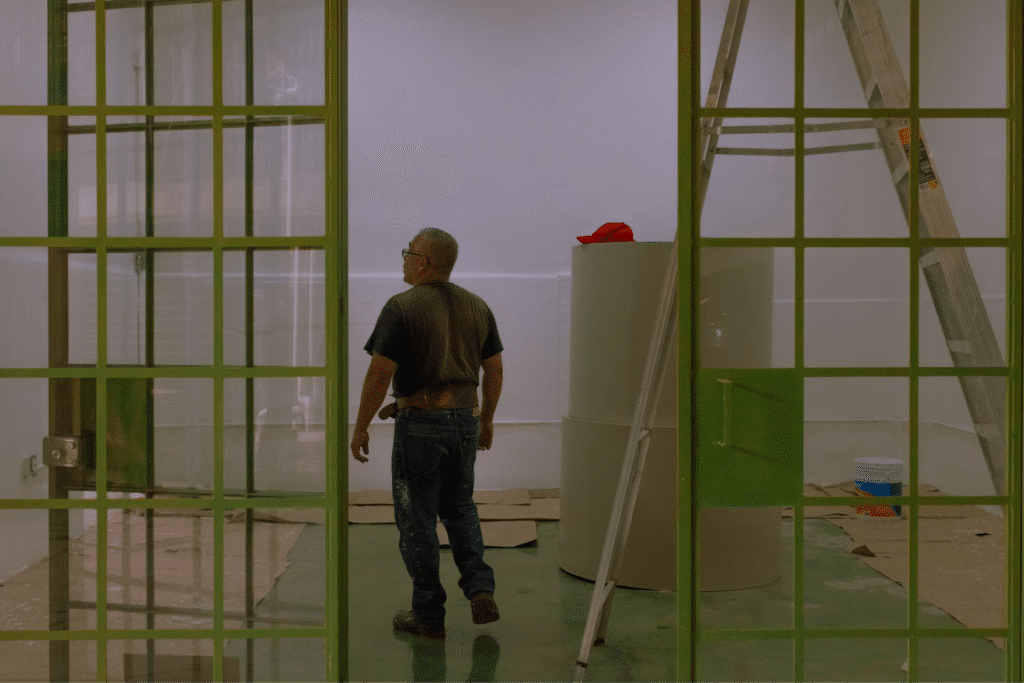
In today’s remodeling and construction industry, cutting corners might seem like a tempting shortcut, especially for small contractors or property managers juggling multiple projects. However, the consequences of skipping proper certification regarding lead paint regulations are minor. Suppose you’re working on homes or child-occupied facilities built before 1978. In that case, chances are you’re dealing with lead-based paint, and state-mandated RRP (Renovation, Repair and Painting) certification isn’t just a box to check—it’s the law. Ignoring it risks people’s health and can land you in legal and financial hot water.
Why Lead Paint Is Still a Serious Threat
Many people mistakenly believe that lead paint is a problem of the past. But the reality is that millions of homes across the U.S. still contain lead-based paint, especially those built before the EPA banned it in 1978. When this paint is disturbed—whether by sanding, demolition, or simple renovations—it releases toxic lead dust. This dust can easily be inhaled or ingested, especially by young children, leading to serious and irreversible health issues. From developmental delays to learning disabilities, lead poisoning is a silent, yet devastating health hazard that disproportionately affects vulnerable populations.

Understanding the RRP Rule and Its State-Level Impacts
The EPA introduced the RRP Rule to protect occupants, particularly children, from lead exposure during renovation activities. However, many states operate under their RRP-authorized programs, often including stricter standards, training protocols, and enforcement practices. These states require contractors to obtain state-specific certification in addition to—or instead of—the federal EPA certification. Skipping this step can mean operating out of compliance, even if you’re EPA certified. State enforcement is no joke; violations can quickly escalate into expensive penalties.
Uncertified Contractors Face Major Legal Consequences
Contractors who sidestep state RRP lead paint certification often assume they save time or money. But that short-term gain comes at a high cost. States have ramped up inspections and audits in recent years, and fines can range from thousands to tens of thousands per violation. Moreover, being caught can lead to license suspensions, project shutdowns, and damage to your business reputation. Civil penalties are only part of the story—criminal charges can also apply in extreme cases, particularly if children are exposed to lead hazards due to negligence.

Your Reputation and Business Could Be on the Line
Even beyond the legal risks, skipping lead certification has long-term business consequences. In today’s digital age, reputation travels faster than ever, and a single citation or public complaint can impact your ability to get new clients. Many homeowners and property managers now ask for proof of lead safety certification before hiring. Without it, you risk losing contracts to competitors who are properly certified. Worse, if an incident occurs under your watch, you could be the subject of lawsuits or public scrutiny that cripple your brand.
Health Risks Extend to Workers and Families
When lead dust is mishandled, it’s not just the occupants who suffer. Uncertified contractors may unknowingly expose their crews to lead hazards by failing to use proper containment, cleaning, and PPE procedures. This dust doesn’t stay confined to the job site—it can travel home on clothing and gear, affecting workers’ families. Without training in safe work practices, your crew becomes part of the danger, not the solution. Certification equips teams with the knowledge to protect themselves and others from harm.

Insurance May Not Cover You Without Certification
If you’re assuming your business insurance will back you up in the event of a claim, think again. Many policies include clauses that exclude coverage for unlicensed or non-certified work, especially in high-risk areas like lead paint remediation. That means you may be left footing the bill if something goes wrong on a job requiring certification. And when lawsuits arise, insurance companies may decline to defend you altogether. Certification isn’t just a regulatory requirement—it’s also a critical risk management tool.
Lead-Safe Work Practices Are Not Intuitive
One of the most dangerous myths in the industry is that common sense is enough to handle lead paint. In reality, lead-safe work practices require specific training and technique. For example, dry scraping and power sanding without HEPA filtration can release dangerous dust levels in seconds. Proper containment, cleanup, and waste disposal procedures aren’t just optional—they’re essential to ensuring no contamination spreads beyond the job site. Without training in RRP certification courses, many contractors operate under dangerous misconceptions that put lives at risk.

State RRP Certification Opens Up More Opportunities
While the certification requirement may seem like a hurdle, it’s also a competitive advantage. State RRP certification shows clients you are compliant, responsible, and committed to safety. It can make your business more attractive to government contracts, real estate investors, and agencies that require strict compliance. Additionally, some states offer contractor directories or marketing opportunities exclusively to certified professionals, putting your name in front of potential clients actively seeking qualified help. Certification doesn’t just protect—it also promotes.
Compliance Is Simpler Than You Think
Many contractors delay certification out of fear that it will be complicated or time-consuming. But in most states, the process is streamlined and affordable. A typical course takes just one day and includes classroom and hands-on instruction. Once completed, you receive your certification and can legally perform renovation work in pre-1978 structures. Training costs are minimal compared to the potential fines or legal fallout from skipping it. And with new courses offered regularly, it’s easier than ever to get—and stay—compliant.
Cutting corners on lead paint safety isn’t just risky—it’s reckless. Skipping state RRP lead paint certification exposes you, your clients, and your team to serious health risks, legal liabilities, and long-term damage to your business. Proper training is a fundamental requirement in today’s highly regulated construction environment. Whether you’re renovating a historic home or managing rental properties, taking the time to get certified is a small investment with massive returns. If you’re unsure where to start, check out Lead Classes available in your state to begin the process. Protect your clients, crew, and business by doing it right from the start.
- 0shares
- Facebook0
- Pinterest0
- Twitter0
- Reddit0


